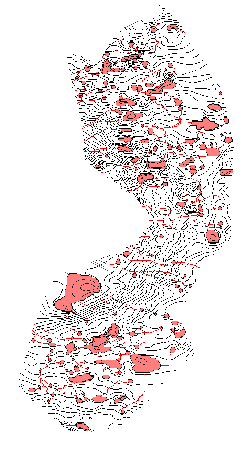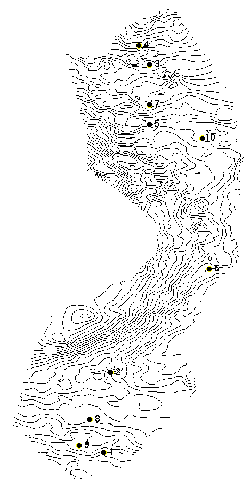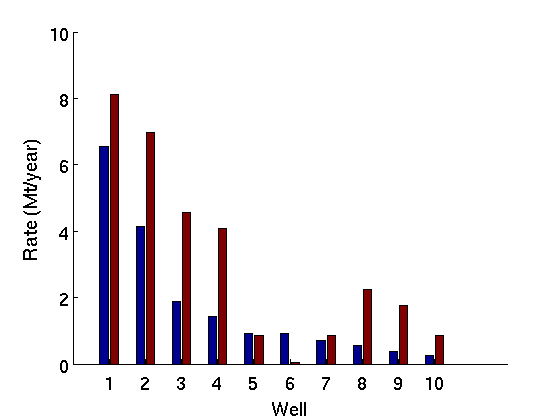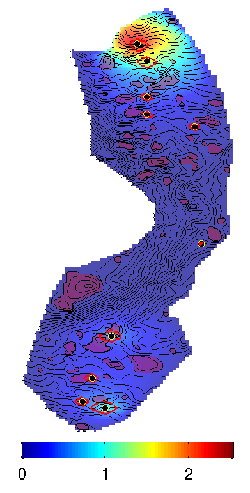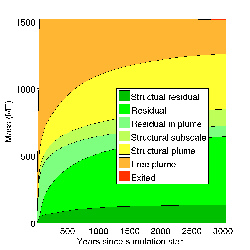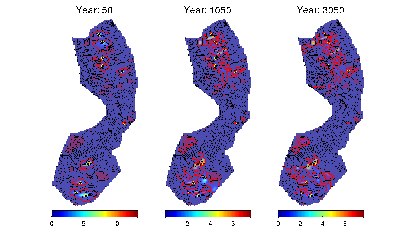|
Utsira: large-scale storage scenario
The Utsira Formation is a large saline aquifer covering some 26.000 square kilometers off the western coast of Norway. It consists of a more than hundred meter thick column of high-permeability sand located at depths ranging from 300-1400 m below sea level. It is overlaid by a layer of thick, low-permeability shale, which acts as an effective barrier against upward migration of CO2 stored in the formation.
CO2 storage operations into the Utsira Formation started in 1996. Since then, approximately one megatonne of CO2 has been injected per year into the Sleipner site in the southern part of the aquifer. So far, no leakage has been detected.
While the Sleipner operation is an important example of CCS in practice, it is not large enough to play any significant role in the context of European emissions reductions. Below, we demonstrate how we can use the functionality of the Numerical CO2 Laboratory to design and assess an 'optimal' large-scale CO2 storage scenario for the Utsira Formation. In the simulated scenario, more than 1.5 gigatonnes of CO2 is ultimately injected and safely contained within the formation. A key assumption in this study is that the aquifer is completely open, with free flow of fluids across its boundaries. As such, the limiting factor will not be pressure buildup, but the ability of the aquifer to retain injected CO2 in the long run. The total trapping capacity of Utsira is estimated here.
|
||||||||

